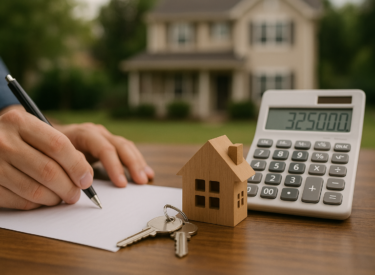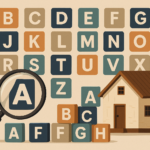
Key takeaways
According to AHURI, it now takes 8 years of average full-time earnings to afford the typical Australian home.
Sydney leads the unaffordability pack: 10.2 years of gross salary needed. Melbourne: 9.1 years, Brisbane: 8.5 years.
This is a pre-tax measure — it doesn’t include stamp duty, legal costs, or lifestyle considerations like children, travel, or living expenses.
If you’ve been following Australia’s property market for a while (as I’m sure many of you have), you know affordability has long been a hot topic — often used as a political football, a media headline grabber, and a generational grievance.
But now, new data from the Australian Housing and Urban Research Institute (AHURI), reported by Australian Broker, has given us a sobering new benchmark:
It now takes 8 years of average full-time earnings to buy a typical Australian home.
Let that sink in.
And if you're looking to buy in Sydney you'll need to hand over more than 10 years' worth of salary.
In Melbourne, it's about 9.1 years.
Even in Brisbane, it’s above 8.5 years.
That’s before tax. Before super.
And long before any thoughts of children, holidays, or a smashed avocado on the weekend.
So what does this really mean — not just for first home buyers, but for property investors, developers, and anyone trying to build wealth in this evolving landscape?
Let’s dive deeper.
The numbers behind the headline
The AHURI study looked at housing affordability from a broad lens.
Instead of just comparing mortgage repayments to income, which can be distorted by interest rates, they looked at home price-to-income ratios.
And here’s what they found:
| City | Median Dwelling Price | Years of Gross Salary Needed |
|---|---|---|
| Sydney | $1.12 million | 10.2 years |
| Melbourne | $875,000 | 9.1 years |
| Brisbane | $800,000 | 8.5 years |
| Adelaide | $750,000 | 8.2 years |
| National Average | $785,000 | 8.0 years |
This means the average Australian household must devote a decade’s worth of pre-tax earnings just to purchase a home, not to repay the loan, but to merely get in the door.
And this doesn’t even consider upfront costs like stamp duty, legal fees, moving costs, or furnishings.
But wages are rising… aren’t they?
Yes, they are — but not fast enough.
The Wage Price Index is finally showing some healthy growth, with wages increasing at around 4.1% annually.
That’s the highest pace since 2009. But it’s still lagging far behind property price growth over the past decade.
Consider this: national property values rose by approximately 25% in 2021 alone, while wages barely budged.
Even with the recent market correction in 2022, most capital cities have fully recovered — and then some.
So even though people feel like they’re earning more, housing is running away from them faster than they can catch up.
And when you factor in the Reserve Bank’s interest rate hikes, which have slashed borrowing capacity by 25–30%, the affordability equation becomes even more brutal.
What’s really driving the affordability crunch?
Let’s not fall for easy soundbites.
The affordability issue isn’t just about greedy landlords or high migration. It’s the result of decades of structural forces converging:
1. Chronic Undersupply of Housing
We simply haven’t built enough homes to match our population growth.
According to the National Housing Finance and Investment Corporation (NHFIC), Australia faces a shortfall of over 100,000 dwellings over the next five years.
Even worse, most new homes are being built on the city fringes, far from jobs, schools, and infrastructure, which pushes up demand (and prices) in well-located suburbs.
2. Planning and Zoning Bottlenecks
It can take 5–7 years to get medium or high-density developments approved in major cities.
Red tape, NIMBYism, and slow council processes choke supply.
This is especially true in inner- and middle-ring suburbs — the very places where people actually want to live.
3. Changing Demographics and Household Structures
Australia's population is still growing, even faster post-COVID, thanks to immigration.
But we’re also living longer and more independently, meaning more households per capita.
That increases demand even further, especially for smaller dwellings and well-located units.
4. Tax and Policy Settings
While negative gearing and CGT discounts have been blamed for rising prices, the truth is: they’re just one SMALL piece of the puzzle.
The real issue is demand outstripping supply, not investors bidding up prices.
In fact, the tax settings have arguably kept rental stock afloat in a market that would otherwise see investors exit, worsening the rental crisis we’re already facing.
What does this mean for investors?
Now here’s where it gets interesting.
Many will read these affordability figures and throw their hands up.
But if you’re a strategic investor — the kind who’s playing the long game — this is not a time to retreat.
This is a time to lean in.
Why?
Because the structural forces that are making housing “unaffordable” are the very same ones that support long-term capital growth.
Think about it:
-
High demand
-
Tight supply
-
Planning restrictions
-
Strong population growth
-
A cultural preference for homeownership
These aren’t going away.
In fact, they’re becoming more entrenched.
And while prices may move in cycles, the long-term trend remains up, especially for investment-grade properties in well-located suburbs close to jobs, transport, and lifestyle amenities.
Here’s what I’d advise seasoned investors (and smart new entrants) to focus on right now:
1. Location, location… and scarcity
Focus on suburbs with tight supply and strong demand drivers.
Inner and middle-ring areas of Sydney, Melbourne, and Brisbane still offer opportunities, but selectivity is key.
2. Don’t chase cheap — buy Quality
Affordable doesn't mean investable. Regional areas and outer suburbs might look cheaper, but often come with higher risks and lower long-term performance.
3. Invest for the long haul
Timing the market rarely works. But time in the market does.
This affordability crunch will pass, but the value of holding high-quality assets will endure.
4. Understand the new buyer/renter profiles
Dual-income couples, downsizers, and remote workers — their preferences are shaping demand.
Properties that cater to lifestyle, flexibility, and convenience will outperform.
5. Use experts to your advantage
With tighter lending conditions, shifting tax laws, and rising complexity in planning, surrounding yourself with a trusted team — from buyer’s agents to tax advisors — has never been more important.
Final thoughts
The idea that it takes 8 years of wages to buy a home is confronting, but it’s not unprecedented.
We’ve seen similar ratios in previous booms, especially in land-constrained global cities like London, Vancouver, and Hong Kong.
Rather than chasing affordability illusions, let’s be realistic: Australia is becoming a wealth-based housing market, not an income-based one.
And while that presents challenges for first-time buyers, it also opens doors for those who understand how to build, grow, and preserve wealth strategically.
At Metropole, we’ve seen this cycle play out again and again over the decades. And every time the headlines scream “crisis,” savvy investors quietly position themselves to take advantage of the next wave.
So don’t let the noise distract you.
Let it inform you.
And remember: wealth is not created in a single year — it’s the result of smart decisions compounded over time.














